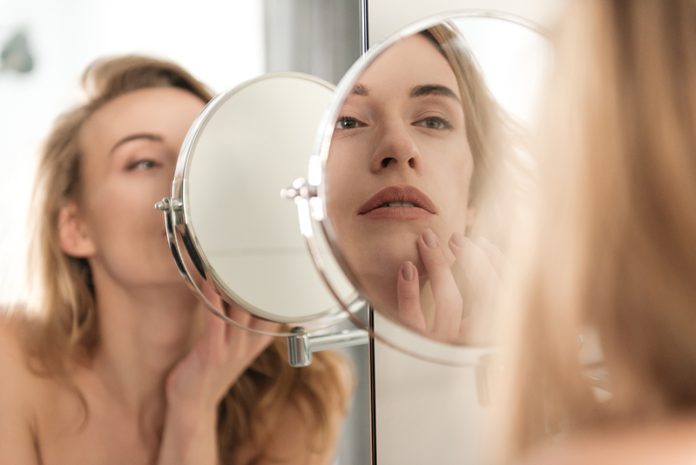If you’ve scrolled skincare TikTok lately or chatted to a facialist in Joburg or Cape Town, you’ve probably heard the word “peptides” tossed around like the new it-girl in beauty. From serums that promise tighter skin to hair growth vials and even gym supplements, peptides are suddenly everywhere. But what are they, do they really work, and should they be in your routine? Here’s the no-nonsense breakdown, from a South African perspective.
First things first: what are peptides?
Peptides are short chains of amino acids—the building blocks of proteins like collagen, elastin, and keratin. Think of amino acids as Lego pieces and peptides as small Lego structures; string enough of them together and you get a complete protein. In the skin, peptides can act as messengers, instructing cells to perform valuable functions such as producing more collagen, calming inflammation, or strengthening the skin barrier. Different peptides do different jobs depending on their structure.
Why all the hype now?
- Better science and stability: Formulators have figured out how to make peptides more stable and deliver them where they need to go.
- Multipurpose benefits: Unlike single-issue ingredients, many peptides support firmness, texture, and barrier health with less irritation than retinoids or strong acids.
- Ageing and lifestyle stressors: Between sun exposure (hello, Highveld summers), pollution, and loadshedding-induced sleep disruptions, our skin barriers take a beating. Peptides can help support resilience.
Types of peptides you’ll see on labels.
- Signal peptides (e.g., palmitoyl pentapeptide-4, also called Matrixyl): Encourage collagen and elastin production, helping with fine lines and firmness over time.
- Carrier peptides (e.g., copper tripeptide-1/GHK-Cu): Deliver trace minerals like copper to support wound healing and skin remodelling. Often marketed for “repair” and improved skin quality.
- Enzyme-inhibitor peptides (e.g., soy/rice peptides): May reduce the breakdown of collagen by inhibiting certain enzymes.
- Neurotransmitter-inhibiting peptides (e.g., acetyl hexapeptide-8/Argireline): Sometimes called “botox-in-a-bottle” because they can mildly relax expression lines. Expect subtle softening, not dramatic freezing.
- Barrier-supporting peptides (e.g., di- and tripeptides in moisturisers): Help with hydration and barrier function, great for sensitive or post-procedure skin.
What peptides can realistically do?
- Improve skin texture and plumpness over time by nudging collagen production.
- Support a healthier moisture barrier, meaning less tightness and flakiness.
- Gently reduce the look of fine lines—especially around the eyes and forehead.
- Calm redness and support repair post-sun or after activities.
What peptides won’t do?
- Replace sunscreen. No ingredient can undo daily UV damage like a good SPF 50.
- Give instant facelift-level results. Most peptide benefits are gradual; think months, not days.
- Outperform prescription retinoids for deep wrinkles. Peptides can complement, not replace, heavy hitters.
How to add peptides to your routine
- Choose leave-on products: Serums and moisturisers beat cleansers because peptides need contact time.
- Layer smart: Peptides play well with most ingredients—hyaluronic acid, niacinamide, ceramides, vitamin C derivatives, and sunscreens. If your routine includes strong acids or low-pH vitamin C (L-ascorbic acid), apply those first, allow them to absorb, then use peptide serum to reduce potential deactivation.
- Frequency: Daily use (AM/PM) is ideal. Peptides are gentle enough for consistent application.
- Expectation setting: Give it 8–12 weeks to judge results. Take a selfie in natural Jozi light and compare later.
Local-friendly picks and where to find them
- Budget serums: Look for brands available at Clicks, Dis-Chem, or Takealot with names like “Matrixyl,” “Argireline,” “Copper Peptides,” or “Peptide Complex.”
- Splurge options: Boutique South African brands and dermatologist-formulated lines often blend multiple peptides with barrier-supporting ingredients—worth it if your skin is sensitive or you prefer minimal routines.
- Eye creams: Peptide-rich eye products can be a great starting point if you’re concerned about crow’s feet from all that squinting in Cape Town’s summer glare.
How peptides fit with SA lifestyles
- High UV and outdoor living: If weekends mean hikes in the Drakensberg, surf sessions in Muizenberg, or braais in the back garden, pair peptides with daily SPF and a hat. Peptides can help repair damage, but sun protection prevents it in the first place.
- Pollution and hard water: City living plus high mineral content in water can stress your barrier. A peptide serum under a ceramide moisturiser helps buffer that tight, squeaky feeling post-shower.
- Loadshedding skincare: When you can’t rely on tools (LED masks, fancy devices), a simple, practical topical routine matters. A peptide serum is a low-effort, high-return investment.
Common myths, debunked
- “Peptides can’t penetrate skin.” Many are engineered with lipid tails (such as palmitoyl) or are small enough to signal effectively in the upper layers. They don’t need to reach the dermis to trigger functional responses.
- “You can’t mix peptides with vitamin C or acids.” Most modern peptide formulas are stable across the typical pH ranges of skincare products. If you’re using strong acids, separate by a few minutes or use on alternate nights if you’re sensitive.
- “Copper peptides turn your skin blue.” High-quality copper peptide serums are blue, but they won’t stain your skin. If you notice irritation, reduce frequency rather than abandoning them altogether.
What about hair and body?
- Hair: Peptide-infused scalp serums can support a healthier scalp environment, which may reduce shedding from stress or tight protective styles. They’re not a cure for medical hair loss, but can complement treatments.
- Body: Peptide body creams can help with crepey skin on arms and chest—useful if you’re diligent with SPF on your face but forget the décolleté.
Who should try peptides?
- If you’re new to anti-ageing and nervous about retinoid irritation.
- If your skin is reactive, dehydrated, or recovering from over-exfoliation.
- If you want a maintenance step to support firmness without overhauling your routine.
- A simple peptide-powered routine to try
AM
- Cleanse gently.
- Vitamin C or antioxidant serum (optional).
- Peptide serum.
- Moisturiser with ceramides.
- SPF 50 broad-spectrum—non-negotiable in SA sun.
PM
- Cleanse.
- Retinoid or exfoliating acid on alternate nights (optional).
- Peptide serum or peptide moisturiser.
- Nourishing moisturiser or squalane oil if you’re dry.
The bottom line
Peptides aren’t magic, but they’re not fluff either. Think of them as skilled communicators for your skin—quietly nudging it to stay firm, hydrated, and resilient amid our sun-soaked, on-the-go South African lives. If you’re consistent and patient, peptides can become one of those “how did I live without this?” steps—no derm appointment or 12-step routine required.
LotsOfLove, SL




